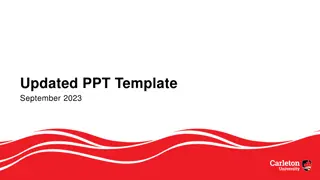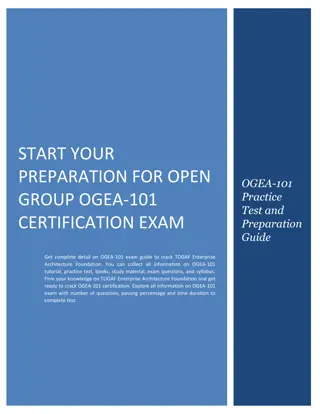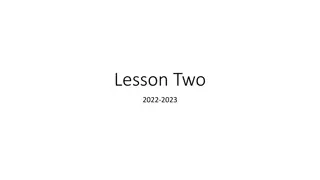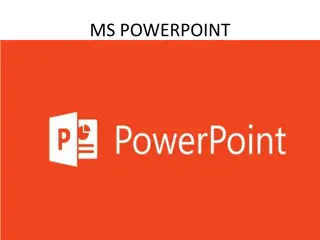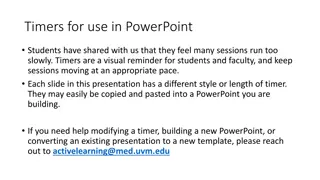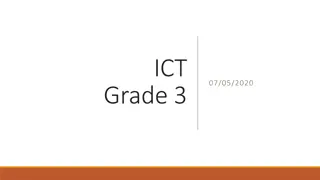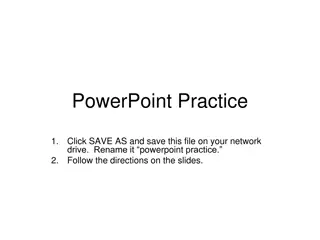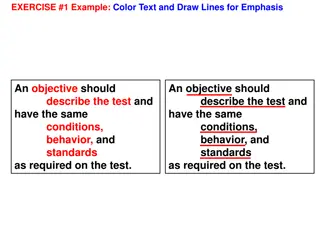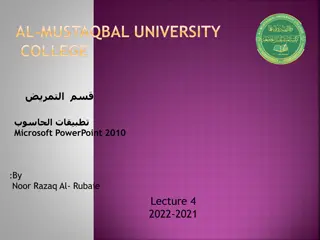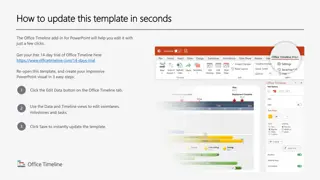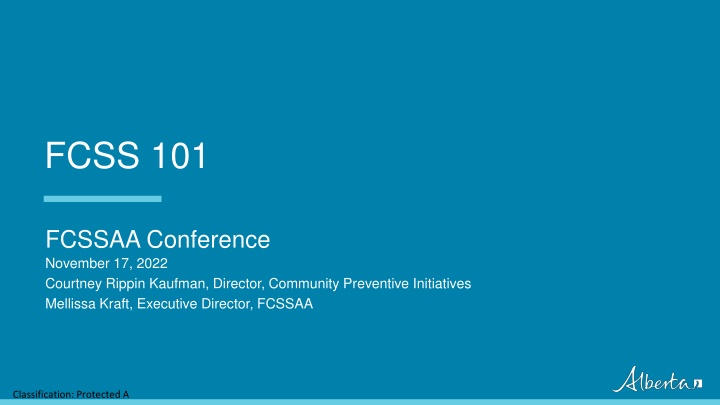
FCSS Program: Prevention Priorities and Strategies
Explore the FCSS program - its history, mandate, prevention priorities, and strategies for promoting well-being and reducing vulnerabilities in communities. Learn about the accountability framework, governance structure, and key performance measures. Discover the emphasis on volunteerism and the focus on addressing social issues through proactive prevention efforts.
Download Presentation

Please find below an Image/Link to download the presentation.
The content on the website is provided AS IS for your information and personal use only. It may not be sold, licensed, or shared on other websites without obtaining consent from the author. If you encounter any issues during the download, it is possible that the publisher has removed the file from their server.
You are allowed to download the files provided on this website for personal or commercial use, subject to the condition that they are used lawfully. All files are the property of their respective owners.
The content on the website is provided AS IS for your information and personal use only. It may not be sold, licensed, or shared on other websites without obtaining consent from the author.
E N D
Presentation Transcript
FCSS 101 FCSSAA Conference November 17, 2022 Courtney Rippin Kaufman, Director, Community Preventive Initiatives Mellissa Kraft, Executive Director, FCSSAA Classification: Protected A
Agenda What is FCSS? Program History and Mandate FCSS Accountability Framework Prevention Priorities and Strategies How FCSS Works Governance Structure Role of the FCSSAA Program Administration Outcomes Model Program Objective and Key Performance Measures Eligible Programs and Services Classification: Protected A
What is FCSS? Program History and Mandate 3 Classification: Protected A
FCSS History and Mandate Program started in 1966 80/20 Partnership Voluntary Participation FCSS Act and Regulation Mandate and Requirements Responsibilities and funding parameters Emphasis on Prevention Focus on Volunteerism 4 Classification: Protected A
FCSS Accountability Framework Common definition of prevention Provincial prevention priorities and strategies Clear governance structure Streamlined outcomes model and Key Performance Measures 5 Classification: Protected A
Prevention is a proactive process that strengthens the protective factors of individuals, families and communities to promote well-being, reduce vulnerabilities, enhance quality of life and empowers them to meet the challenges of life. 6 Classification: Protected A
Prevention Primary Secondary Tertiary Address immediate needs Address root causes of social issues Address issues at early stage 7 Classification: Protected A
Provincial Prevention Priorities Homelessness and housing insecurity; Mental health and addictions; Employment; Family and sexual violence and; Aging well in community 8 Classification: Protected A
Provincial Prevention Strategies Promote and encourage active engagement in the community; Foster a sense of belonging; Promote social inclusion; Develop and maintain healthy relationships; Enhance access to social supports; and Develop and strengthen skills that build resilience. 9 Classification: Protected A
Governance Structure 10 Classification: Protected A
Governance Structure Program Advisory Team Connect GoA FCSS program staff, FCSSAA, and Local FCSS Programs at the operational level to support FCSS Program accountability. Steering Committee Formally connects and fosters a positive working relationship between the GoA and external FCSS stakeholders. Purpose Civil Society and Community Initiatives Executive Director FCSSAA Executive Director FCSS Directors Network members GoA FCSS Program Staff FCSSAA Program Staff Assistant Deputy Ministers (representing cross ministry partners) FCSSAA Board President FCSSAA Executive Director Alberta Municipalities Rural Municipalities of Alberta Metis Settlement General Council FCSS Directors Network representatives Membership Operational focus with work plan including: Developing and maintaining training material program guides, and program policies Identify operational issues and trends Provides strategic oversight on matters including: Implementation of the framework Provincial level trends and emerging needs Opportunities for continuous improvement Functions 11 Classification: Protected A
The FCSSAA Working Together 12 Classification: Protected A
FCSS in Alberta 308 Municipalities and 8 Metis Settlements, organized into 210 local programs (Oct 1, 2022) Over 98% of the population resides in communities with FCSS programs 8 FCSS regions in the province 13 Classification: Protected A
How FCSS Bodies Relate 14 Classification: Protected A
FCSS Association of Alberta Representatives from FCSS regions and the Director s Network Committee make up the board Strong voice on behalf of FCSS programs, advocating to government and non-government organizations on issues that impact FCSS Works closely with the ministry; solid relationship with other ministries and non-government organizations related to FCSS Annual conference in November and regular learning opportunities Regional meetings occur in the spring 15 Classification: Protected A
FCSS Administration Program Structure and Municipal Responsibilities 16 Classification: Protected A
Administration Structure FCSS Department Community Services Department Direct Municipal Management Society/Non-Profit Single Program Multi Municipality Grant Transfers 17 Classification: Protected A
External Grants Direct Delivery services are provided by FCSS program staff or service providers under contract FCSS funds granted to local organizations and groups to deliver services or projects - FCSS funded agencies can be ongoing grants or one- time projects must meet FCSS eligibility guidelines 18 Classification: Protected A
Municipal Roles & Responsibilities Responsibilities: Develop stronger communities Promote public participation Facilitate and promote volunteerism Use resources efficiently Coordinate and cooperate with allied service agencies Roles: Municipal Council Advisory Board/Committee FCSS Program Director 19 Classification: Protected A
Program Management Community needs assessment Plan programs and services Outcomes monitoring Program evaluation Annual reporting Promote the program and share success stories 20 Classification: Protected A
Provincial Roles & Responsibilities Coordinate program governance Establish provincial prevention priorities and strategies Ensure accountability Complete program reviews Interpret legislation Develop policies Provincial level reporting 21 Classification: Protected A
FCSS Outcomes Model Program Objectives & Key Performance Measures 22 Classification: Protected A
Program Objectives and Outcomes FCSS programming: Increases the protective factors of individuals, families and communities related to provincial prevention priorities. Strategically connects Albertans to address provincial prevention priorities. Reflects community demographics and needs. Is accessible, appropriate and designed to serve Albertans across their lifespan. Fosters connectivity in participating communities 23 Classification: Protected A
Key Performance Measures Program Outcomes (streamlined list of provincial outcome measures) Local FCSS Programs that completed a needs assessment Number of program participants Number of referrals made Percentage of participants satisfied with FCSS programs and services Percentage of participants reporting FCSS programs and services were easy to access Number of partnerships Number of volunteers and volunteer hours 24 Classification: Protected A
Eligible Programs and Services 25 Classification: Protected A
Program Requirements and Eligibility Must be preventive, enhance the well-being of individuals and families, and contribute to one or more of the following: Help people develop independence, strengthen coping skills, and become more resilient to crisis; Help people develop an awareness of social needs; Help people develop interpersonal and group skills that enhance relationships; Help people and communities assume responsibility for decisions and actions that affect them; and Support people to be active participants in their community 26 Classification: Protected A
Eligible Programs Projects that assist communities to identify their social needs and develop responses to meet those needs; Programs that promote, encourage and support volunteer work in the community; Services that inform the public of available services; Programs that support skill development so people can function more effectively within their environment; Programs to support seniors to remain in their homes; and Programs promote the social development of children and their families. 27 Classification: Protected A
Ineligible Services Services must not: Be primarily recreational or leisure time pursuits Be primarily rehabilitative in nature Duplicate services provided by a government or government agency Offer direct assistance* Prohibited costs: Capital expenses (land, buildings, building renovations, vehicles) Those not directly related to FCSS programs/services Municipal taxes or levies Payments to board members other than expense reimbursement 28 Classification: Protected A
Eligibility Assessment Question Answer Is the service or project preventive in nature? Yes Does it enhance the social well-being of individuals or families? Yes Does it address a community need? Yes Does it align with one or more prevention strategies? Yes Does it address one or more of the prevention priorities? Yes Is it: Does it: Duplicate a program or service? Provide direct assistance No Primarily recreational? Primarily rehabilitative? Does it comply with allowable municipal costs? Yes 29 Classification: Protected A
Questions? Classification: Protected A


